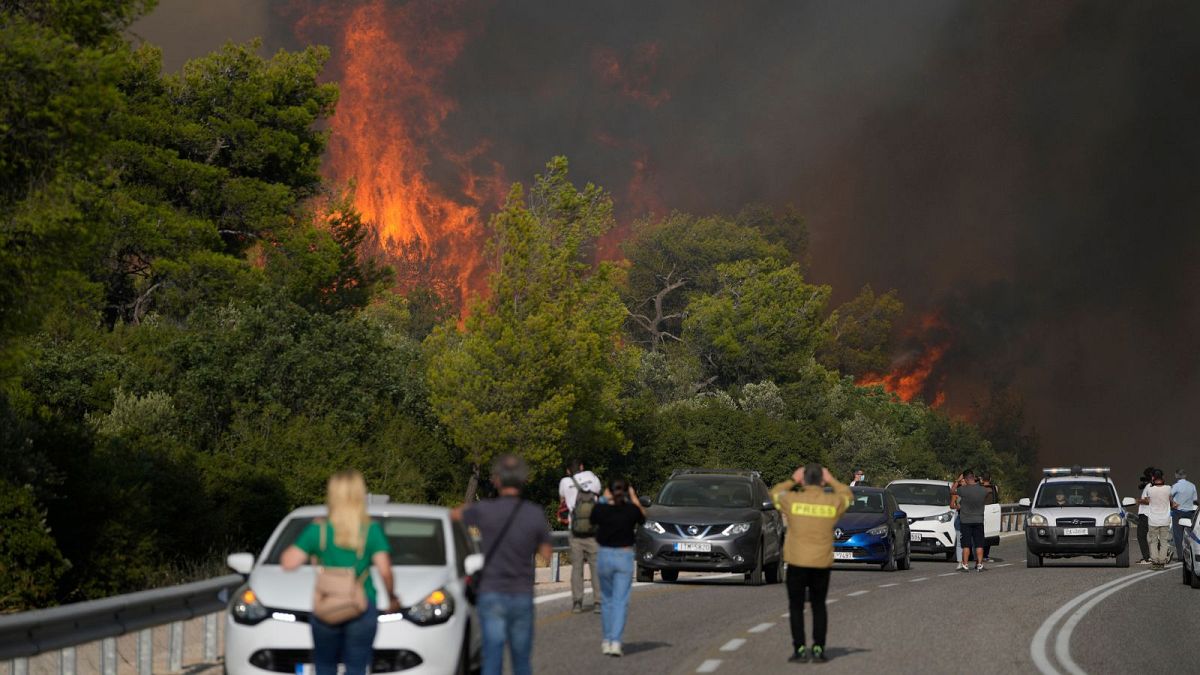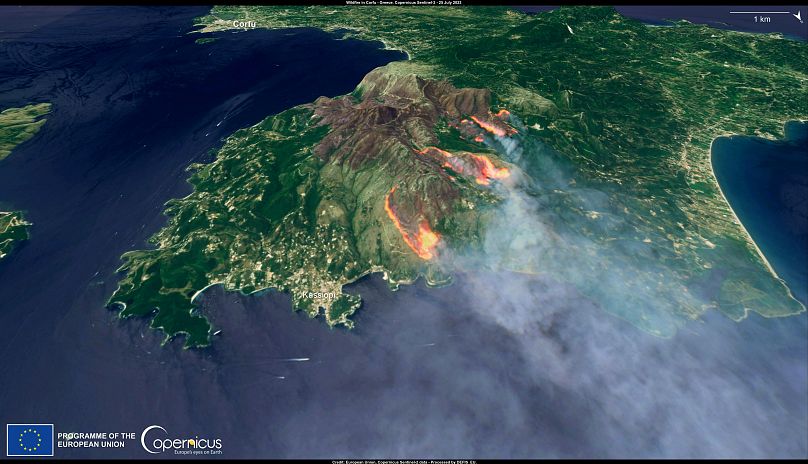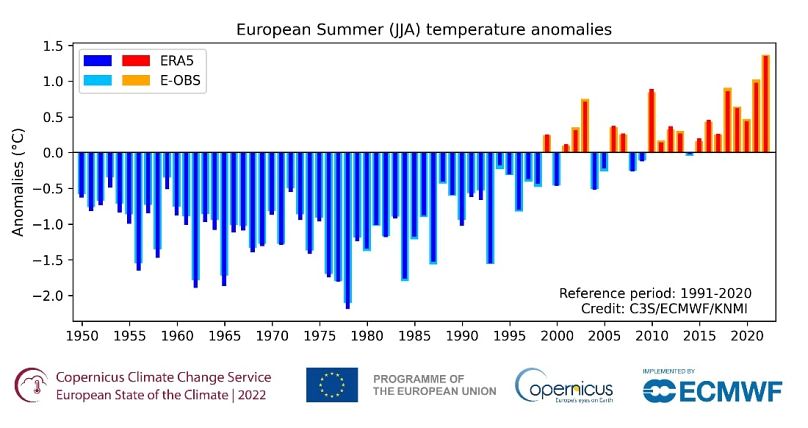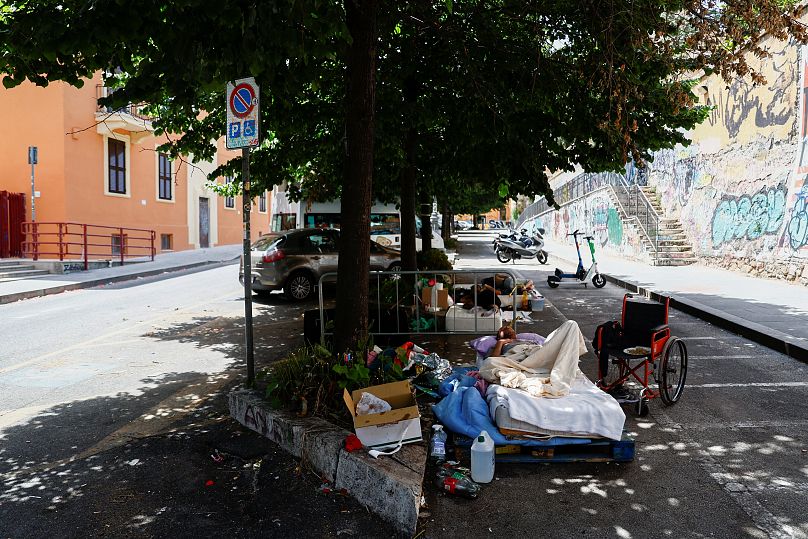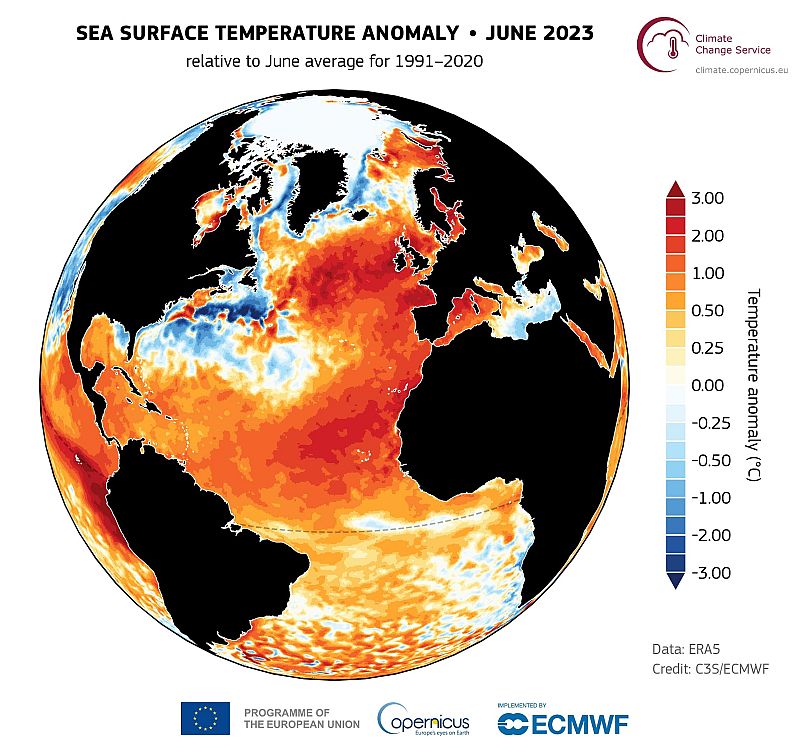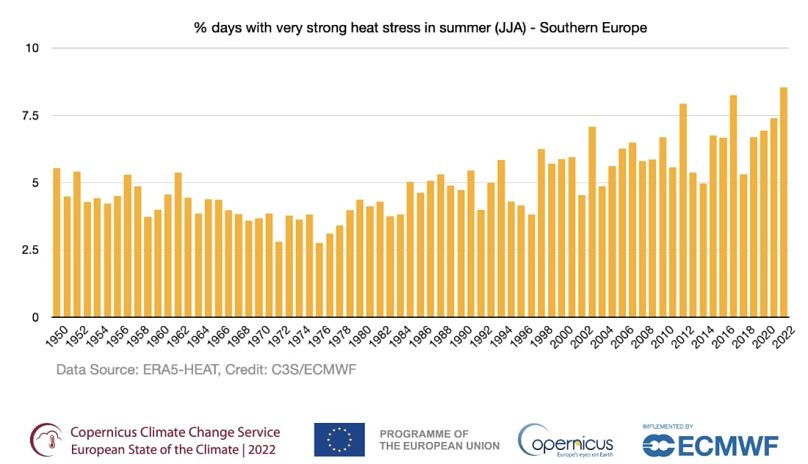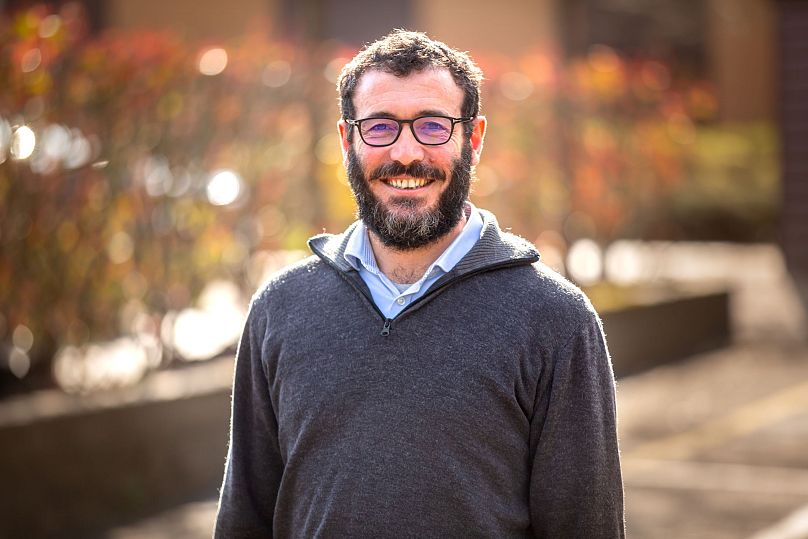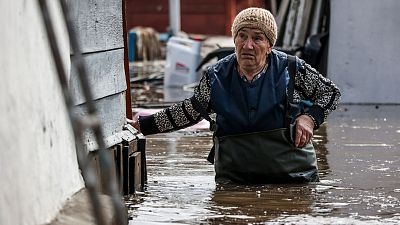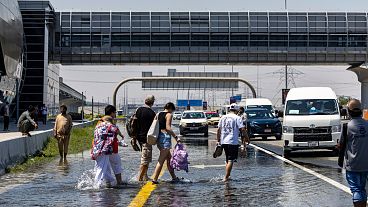Europe’s July heatwaves were made 950 times more likely because of human caused climate change, scientists have found.
Imagine a future in which headlines celebrate a cool summer’s breeze returning to Europe’s shores. Southern cities again becoming liveable for residents and a safe bet for tourists.
It’ll be a long time before we see such a climbdown, but it’s not out of reach, says Dr Carlo Buontempo, director of the EU’s Copernicus Climate Change Service (C3S).
By radically reducing emissions, we could see the impact in our lifetimes, he says. “If we are good at mitigating climate change, we can revert to a climate closer to what it is now, possibly even cooler than it is now towards the end of the century.”
In the meantime, this month’s brutal heatwave - which scientists find would have been virtually impossible without human-caused climate change - will start to look relatively cool.
With raging wildfires, floods and tens of thousands of lives lost to summer heat already, the next 20 years or so are tough to picture. But understanding the facts - and using them as a spur to action - is the best starting point in this slim window of time to turn things around.
We spoke to Dr Buontempo about the science behind Europe’s summer of extreme weather and what’s to come.
Is climate change causing the heatwave?
New analysis by the World Weather Attribution group has concluded that the recent heatwaves in Europe and the US were made, at absolute minimum, 950 and 4,400 times more likely by global heating.
Even without sophisticated computer modelling, the pattern is clear: the eight warmest years have all occurred in the last eight years, the UN’s World Meteorological Organisation (WMO) reported in November.
Summer 2023 is veering up this path too. Last month was the hottest June ever recorded globally, according to the US-based National Oceanic and Atmospheric Administration (NOAA).
Regional and national heat records have been tumbling due to the heatwave over southern Europe this month. The all time record for Europe - 48.8C in Sicily measured (though yet to be officially verified) in 2021 - could soon be beaten.
It’s normal for weather and climate records to be broken now and then, of course. “What is surprising and what is striking to me is the fact that this is not just an oddity of climate,” explains Dr Buontempo.
It’s not just a fluctuation but a pattern, he says, getting more pronounced over the last three summers. 2021’s season was the hottest ever recorded in Europe - swiftly beaten by summer 2022 by nearly half a degree.
“Even if you don't trust climate models or what climate science is telling you, you should trust the observations,” he says. “And observations are telling us unequivocally that the climate system has been warming, and extremes are clustering together and becoming more frequent than they were before.”
Though attribution studies provide valuable data about specific events, the connection between fossil fuelled global heating and heatwaves is already deadly clear. The UN Intergovernmental Panel on Climate Change (IPCC) states that “every additional 0.5C of global warming causes clearly discernible increases in the intensity and frequency of hot extremes, including heatwaves."
What are anticyclones, and how are they shaping the heatwave?
The contours of this particular heatwave come from an anticyclone over the southern half of Europe.
An anticyclone is a region of high pressure where the wind turns clockwise and weaker currents are driven down - the air compressing and warming as it descends. It creates a static situation with little cloud cover, meaning the sun beats down even harder on the ground.
This has trapped hot air into a heat dome over Greece, eastern Spain, Sardinia, Sicily and southern Italy, where temperatures have exceeded 45C in recent days.
Anticyclones over southern Europe can also pull in large scale, hot winds from Africa, but this avection hasn’t played a significant role with anticyclones Charon and Cerberus.
Climate scientists are still fine-tuning the way they calculate global heating’s influence on heat domes and air circulation, explains Dr Buontempo. But it follows that if the “background temperature” is rising, these extreme events are set to get more frequent and intense.
Are El Niño and ocean heating behind Europe’s heatwave?
El Niño is back after three years, with alarming implications for global temperatures. The natural climate phenomenon is one side of the ‘El Niño Southern Oscillation (ENSO)’. In contrast to the cooling La Niña state, it warms up the surface waters of the Pacific Ocean, which releases more heat into the atmosphere.
“The direct impact of El Niño over Europe though is somehow limited,” says Dr Buontempo, and depends on whether it develops into a moderate or strong event, which will take a few months to determine.
Closer to home, the marine heatwaves in the north Atlantic Ocean at the end of June and start of July probably had a stronger impact on Europe’s scorching temperatures.
“At a global level, the North Atlantic and the Pacific play together to push the global mean temperature above any previous record,” explains Dr Buontempo. “So that's what we have seen on the 6 July [the world’s hottest day] and I found that interesting because it wasn't just El Niño driving it. It was really an interplay between El Niño and the North Atlantic, and to some extent the Southern Ocean.”
Though it’s hard to uncouple these climatic events on our blue planet, the C3S experts don’t think that El Niño has played a significant role in the heatwave.
‘We will not cross that border alive’: Days of extreme heat stress are increasing
With extreme weather events increasing across Europe, is there a danger that they become normalised for people?
There may be an element of adjustment, says Dr Buontempo, but ultimately “there are some hard limits, physiological limits.”
“We know that when the temperature gets close to 36C, and humidity is 100 per cent, our bodies cannot cool down. There are no physical mechanisms for us to cool down. So that's a hard border for us. We will not cross that border alive or without air conditioning.”
Heat stress can be overlooked in climate coverage, but this environmental impact on the human body is intensifying too. Across Europe, C3S has tracked an upward trend in the number of summer days on which the maximum heat stress falls within the categories of ‘strong’ and ‘very strong’.
Since heat stress is “multifactorial” - meaning it measures not just temperature but humidity, wind speed and other factors - there are things we can do to improve it, says Dr Buontempo.
“There are some no-regrets, relatively inexpensive options that can be considered at the local level to reduce our heat stress,” he adds, such as providing shaded areas and drinking fountains in cities.
Will heatwaves finally shift the dial on climate action?
Europe’s first major heatwave struck in summer 2003, blindsiding people and triggering tens of thousands of deaths in France, Italy and Spain. “Climate scientists warned us that by 2020, that sort of summer would be much more common, if not prevalent,” says Dr Buontempo.
So it has transpired, to mixed emotions from those who have been sounding the alarm for decades.
“What is playing out all over the world right now is entirely consistent with what scientists expect. No one wants to be right about this. But if I’m honest, I am stunned by the ferocity of the impacts we are currently experiencing,” comments Dr Joëlle Gergis, a senior lecturer in climate science in the Guardian Australia newspaper.
How does Dr Buontempo feel, constantly taking the pulse of Europe’s deteriorating climate?
“At times I'm a bit baffled, to be honest. I'm a bit baffled that there are so many people who don't trust the evidence. I think being sceptical is a very natural attitude and a very scientific one as well. But in my mind, that sort of scepticism should start with facts and data observation,” he says.
“The level of abuse we receive on Twitter, saying that we have an agenda or that we are lying, that’s quite tiring to be honest. Also because I like to think that we should all be driven - our actions should be driven by science and evidence. And what we do is to provide evidence.”
Generally speaking, however, he sees a “growing recognition” that the climate crisis is upon us, especially from citizens in southern Europe and the Mediterranean.
“I think this changes the sensibility of people, changes their priorities,” he says. “So politicians in my mind react to the fears, the priorities, the emotions, and also the rational thoughts of the population in general, and this shift in priority should trigger a reaction also among the decision makers and the policymakers.”
This is, in a nutshell, the purpose of Copernicus in providing its open data. Those wanting to deepen their understanding of the science could start with ‘reanalysis’ datasets, suggests Dr Buontempo. “Glueing together” past observations plus scientists’ knowledge of climate systems, you can use them to see how the climate of your town or region has changed over time.
All the data is pointing in one direction: “If we want to mitigate the risk associated with these heatwaves, then we need to get to net zero as soon as possible.”
